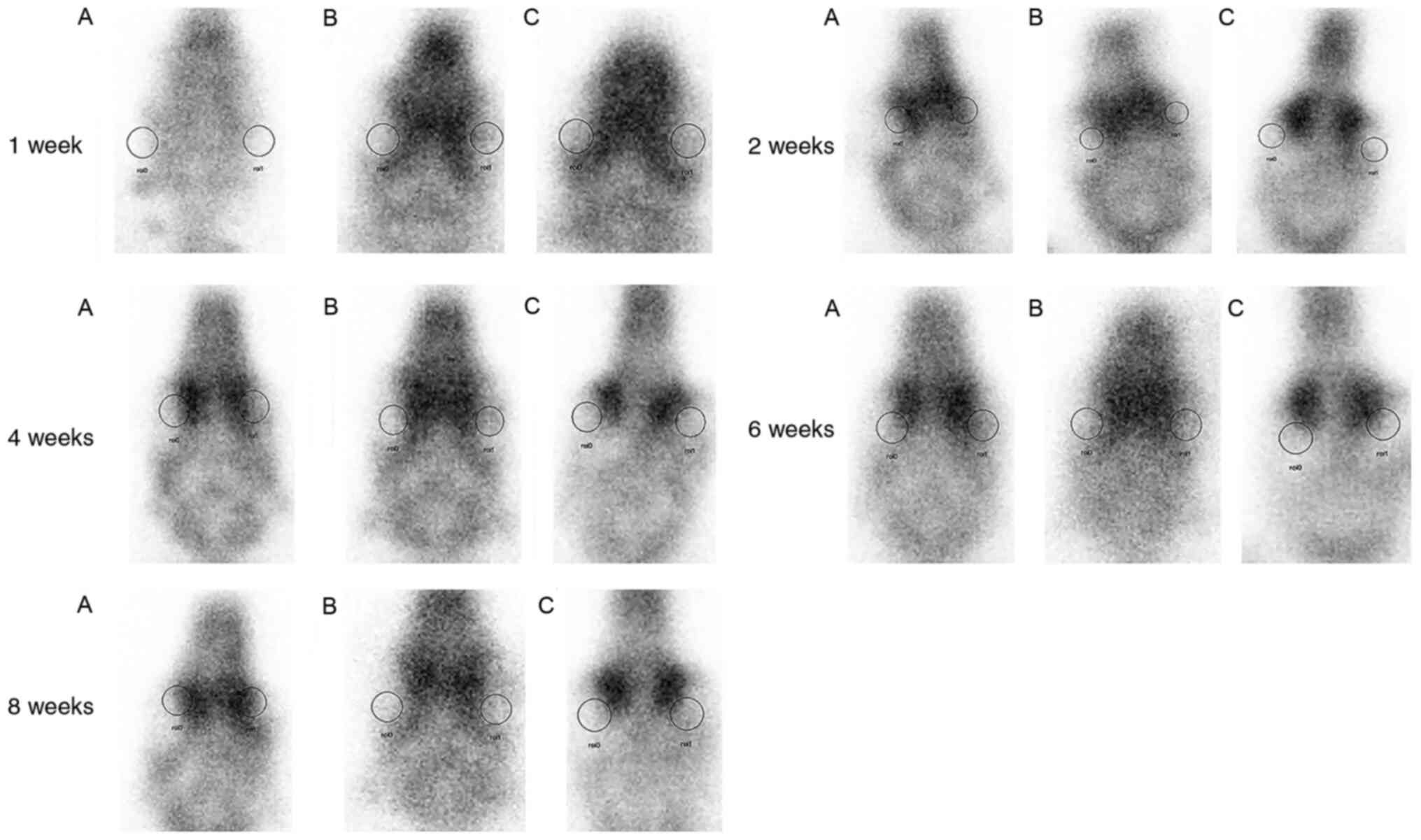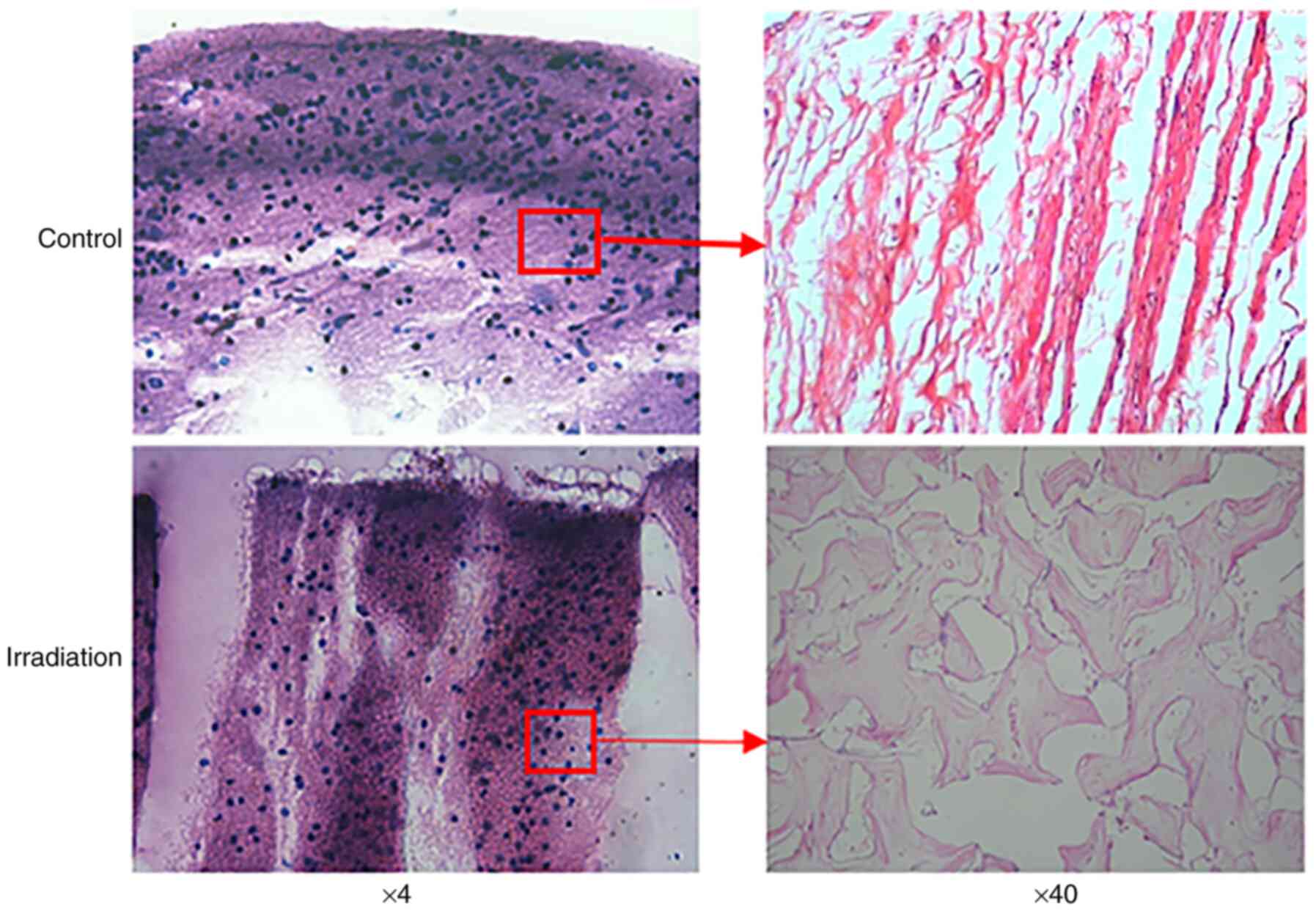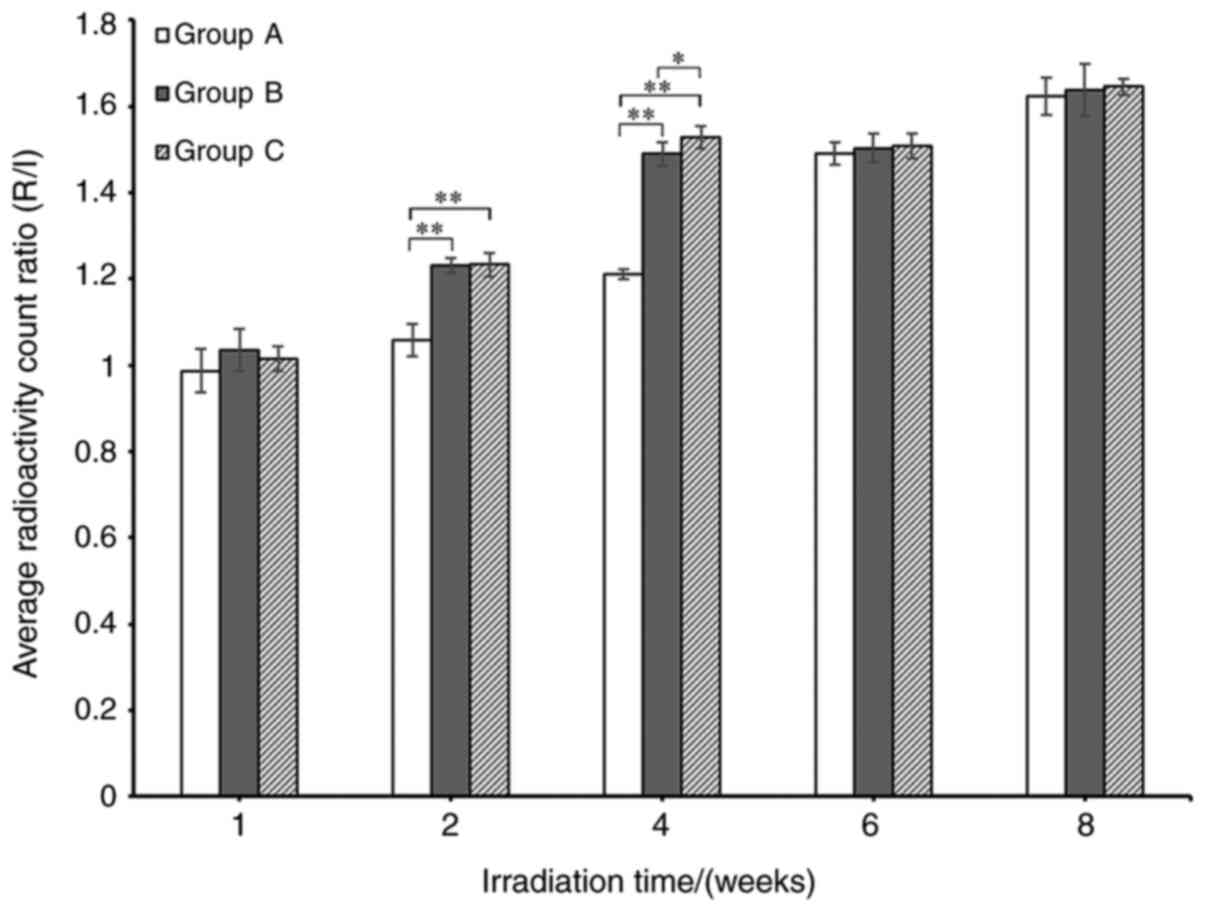|
1
|
Hong Y, Xu GX and Chen SD: Hydroxyapatite
orbital implantation combined with united skin grafting for
eye-socked depression with III° conjunctival sac stenosis,
2008.
|
|
2
|
Kolli S, Ahmad S, Lako M and Figueiredo F:
Successful clinical implementation of corneal epithelial stem cell
therapy for treatment of unilateral limbal stem cell deficiency.
Stem Cells. 28:597–610. 2010.PubMed/NCBI View
Article : Google Scholar
|
|
3
|
Li D, Jie Y, Liu H, Liu J, Zhu Z and Mao
C: Reconstruction of anophthalmic orbits and contracted eye sockets
with microvascular radial forearm free flaps. Ophthalmic Plast
Reconstr Surg. 24:94–97. 2008.PubMed/NCBI View Article : Google Scholar
|
|
4
|
Tuby H, Maltz L and Oron U: Implantation
of low-level laser irradiated mesenchymal stem cells into the
infarcted rat heart is associated with reduction in infarct size
and enhanced angiogenesis. Photomed Laser Surg. 27:227–233.
2009.PubMed/NCBI View Article : Google Scholar
|
|
5
|
Corazza AV, Jorge J, Kurachi C and Bagnato
VS: Photobiomodulation on the angiogenesis of skin wounds in rats
using different light sources. Photomed Laser Surg. 25:102–106.
2007.PubMed/NCBI View Article : Google Scholar
|
|
6
|
Pinheiro AL, Meireles GC, de Barros Vieira
AL, Almeida D, Carvalho CM and dos Santos JN: Phototherapy improves
healing of cutaneous wounds in nourished and undernourished Wistar
rats. Braz Dent J. 15:SI21–SI28. 2004.PubMed/NCBI
|
|
7
|
Ankri R, Lubart R and Taitelbaum H:
Estimation of the optimal wavelengths for laser-induced wound
healing. Lasers Surg Med. 42:760–764. 2010.PubMed/NCBI View Article : Google Scholar
|
|
8
|
Correa F, Lopes Martins RA, Correa JC,
Iversen VV, Joenson J and Bjordal JM: Low-level laser therapy (GaAs
lambda=904 nm) reduces inflammatory cell migration in mice with
lipopolysaccharide-induced peritonitis. Photomed Laser Surg.
25:245–249. 2007.PubMed/NCBI View Article : Google Scholar
|
|
9
|
Mesquita-Ferrari RA, Martins MD, Silva JA
Jr, da Silva TD, Piovesan RF, Pavesi VC, Bussadori SK and Fernandes
KP: Effects of low-level laser therapy on expression of TNF-α and
TGF-β in skeletal muscle during the repair process. Lasers Med Sci.
26:335–340. 2011.PubMed/NCBI View Article : Google Scholar
|
|
10
|
Bossini PS, Fangel R, Habenschus RM, Renno
AC, Benze B, Zuanon JA, Neto CB and Parizotto NA: Low-level laser
therapy (670 nm) on viability of random skin flap in rats. Lasers
Med Sci. 24:209–213. 2009.PubMed/NCBI View Article : Google Scholar
|
|
11
|
Chen Q: Establishing and studying the
model of posterior capsule opacification in rabbits. Compilation of
the 9th Central and Southern Region Experimental Animal Science and
Technology Exchange Conference, pp1016-1021, 2009.
|
|
12
|
Gu J, Zhai J, Liao G and Chen J: Boston
type I keratoprosthesis implantation following autologous
submandibular gland transplantation for end stage ocular surface
disorders. Ocul Immunol Inflamm. 26:452–455. 2018.PubMed/NCBI View Article : Google Scholar
|
|
13
|
Liu DY: Clinical analysis of 129 cases of
traumatic conjunctival sac stenosis. J Ocul Injury Occup
Ophthalmol. 32:770–771. 2010.
|
|
14
|
Nie YH, Xing YQ, Guo Y and Zhu J: Analysis
on the causes and management of exposure of orbital hydroxyapatite
implants. Recent Adv Ophthalmol, 2006-09.
|
|
15
|
Hornig C, Barleon B, Ahmad S, Vuorela P,
Ahmed A and Weich HA: Release and complex formation of soluble
VEGFR-1 from endothelial cells and biological fluids. Lab Invest.
80:443–454. 2000.PubMed/NCBI View Article : Google Scholar
|
|
16
|
de Araújo CE, Ribeiro MS, Favaro R, Zezell
DM and Zorn TM: Ultrastructural and autoradiographical analysis
show a faster skin repair in He-Ne laser-treated wounds. J
Photochem Photobiol B. 86:87–96. 2007.PubMed/NCBI View Article : Google Scholar
|
|
17
|
Shen Y, Fang C, Huang Y, Li Z, Xue Z and
Li Y: Effects of low-power semiconductor laser irradiation on
healing of tympanic membrane perforations of guinea pigs. Chin J
Laser Med Surg. 7:386–392. 2008.(In Chinese).
|

















